I remember meeting my first Toy Australian Shepherd at a local dog park. This small, energetic dog instantly stood out, playing and running with a zest that was simply infectious. That encounter perfectly encapsulates the essence of the Toy Australian Shepherd – small in size but full of energy and spirit.
These mini versions of the Australian Shepherd are intelligent and quick to learn, making training a rewarding experience. They are incredibly active and always up for a game or a walk, which suits active owners or families well.
Beyond their playfulness, Toy Aussies are known for their affectionate nature. They develop strong bonds with their owners and thrive on companionship. It’s important to keep them engaged with regular exercise and mental stimulation to prevent boredom.
I’d like to tell you more about this breed below. I’ll discuss their care, training tips, and how to ensure a happy, healthy life for your Toy Aussie. Read on!
TABLE OF CONTENTS
- Toy Australian Shepherd Breed Summary
- History and Origin of the Toy Australian Shepherd
- Physical Characteristics of the Toy Australian Shepherd
- Toy Australian Shepherd Personality and Temperament
- Common Health Concerns for Toy Australian Shepherds
- Toy Australian Shepherd Care
- Toy Australian Shepherd Price
- Is a Toy Australian Shepherd Right for You?
- FAQs on Toy Australian Shepherds
- Toy Aussies Will Amaze You
Toy Australian Shepherd Breed Summary
| Common names: | Toy Aussie Shepherd, California Shepherd |
| Origin: | California |
| Breed group: | Companion dog |
| Size: | Toy |
| Height: | 11–14 inches |
| Weight: | 12–17 pounds |
| Colors: | Red merle, blue merle, red tri-color, black tri-color, solid black, solid blue merle, solid red merle |
| Coat: | Double coat, longer outer coat, wooly inner coat |
| Life expectancy: | 12–15 years |
| Temperament: | Affectionate, playful, friendly |
| Shedding: | Moderate/heavy shedders |
| Barking tendency: | Minimal, only to alert owners |
| Cost: | $1,800–$2,500 |
History and Origin of the Toy Australian Shepherd
The Toy Australian Shepherd, while sharing a name with the Australian Shepherd, actually has roots deeply embedded in the western United States. Originating in the late 19th and early 20th centuries, they’re a smaller version of the Australian Shepherd, bred by American ranchers who admired the Aussie’s herding skills but needed a dog better suited for smaller spaces.
Here’s an interesting twist: the ‘Australian’ part of their name is a bit misleading. It refers to the Basque shepherds who migrated from Australia to the U.S. in the 1800s, bringing their skilled herding dogs with them. These dogs were later bred with smaller breeds to create the Toy size we love today.
What I find impressive about Toy Aussies is their ability to retain the intelligence and energy of their larger counterparts, making them stars in horse shows and agility events. They’re not just a pretty face – these dogs are smart, agile, and quick learners.
Nowadays, Toy Australian Shepherds are cherished not just for their herding abilities but as beloved family pets. They’ve transitioned beautifully from working dogs to loyal and affectionate companions in our homes.
Physical Characteristics of the Toy Australian Shepherd
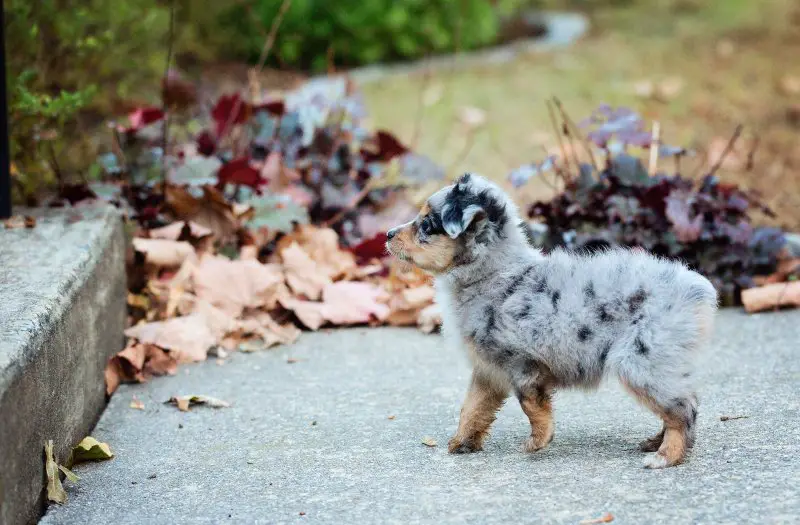
From Adobe Stock
When you see a Toy Aussie for the first time, you’re immediately struck by its compact yet robust build, a perfect blend of strength and agility in a smaller frame.
Height and Weight
Toy Australian Shepherds are considered toy-sized dogs with a height at the withers of 11–14 inches, and a weight of 12–17 pounds. Females are usually smaller and lighter than males. Mini Australian Shepherds, often referred to as Mini Aussies, share similar characteristics but are slightly larger.
Irresponsible breeders continually try to create even smaller versions of the breed by crossbreeding and breeding with the runts. I advise you to avoid these exceptionally tiny Toy Aussies because they may have serious genetic defects.
Colors
Each Toy Aussie I’ve met has its unique splash of colors and patterns. It’s like looking at a living, breathing work of art, with hues ranging from blue merle to red, often accented with white or tan markings. It’s always a surprise to see the variety of coats in these little guys!
Toy Australian Shepherds are typically red merle, blue merle, red tri-color, black tri-color, or solid black. The presence of the merle gene is responsible for the patterns on the dog’s coat, with darker patches against a lighter background. On top of that, I notice that most Toy Aussies have a white patch on the chest.
There are some tri-colored Toy Australian Shepherds, with different combinations of colors, but these are fairly uncommon. The solid blue merle isn’t a true blue and is the rarest of the Toy Aussie colors.
Coat
From my own experience with these delightful dogs, the coat of a Toy Australian Shepherd is something to truly marvel at. Their moderately long, slightly wavy to straight coat is more than just a pretty feature; it’s a perfect blend of beauty and practicality. When you run your fingers through their medium-textured fur, you can feel the sturdiness that protects them in different weathers.
Now, let’s talk about their coat changes with the seasons. It’s fascinating! In spring and fall, when they shed their winter coat, you’ll find more fur than usual around your home. But it’s all part of the process as they prepare for the temperature change. And as winter approaches, their coat thickens up, keeping them cozy and warm.
Eyes
Most toy Australian Shepherds have brown eyes or blue eyes. The merle gene occasionally causes a dog to have one blue eye and one brown eye, or even sometimes two different colors in one eye.
Legs
Toy Australian shepherds have short, stocky, muscular legs. It amazes me that even though their legs seem short for their bodies, these little dogs are fast runners.
Toy Australian Shepherd Personality and Temperament
Although the Toy Australian Shepherd is considered a companion dog, it has a similar temperament to its herding dog ancestors. Like the Australian Shepherd, Toy Aussies are intelligent, active, and energetic, according to the AKC temperament guide. The following are other traits that make this breed unique:
Good with Children and Other Pets
Toy Australian Shepherds are generally great with children and other pets, especially when raised with them. They’re playful and gentle, making them wonderful family pets. Their social nature extends to other animals as well, often getting along well with other dogs and even cats. However, their herding instinct might kick in around small children and animals, so it’s important to supervise interactions and teach them appropriate behavior from a young age.
Adaptable
One of the qualities I admire most in Toy Aussies is their adaptability. They can thrive in various environments, from apartments to sprawling farms, as long as their physical and mental needs are met. They adjust well to different living situations, making them suitable for a variety of lifestyles. However, their adaptability doesn’t mean they can be left alone for long periods – these dogs crave companionship and can become anxious if left alone too often.
Loyal
The Toy Australian Shepherd is incredibly loyal, a trait that makes them not just pets, but devoted members of the family. In my experience, these dogs form strong, lasting bonds with their owners. They’re the type of dogs that will always be by your side, whether you’re lounging at home or out on an adventure. This loyalty makes them excellent companions, but it also means they can be a bit protective. Early socialization is key to ensuring their protective nature doesn’t become overbearing.
Energetic
Energy is a word synonymous with the Toy Australian Shepherd. They are bursting with vitality and need regular exercise to stay happy and healthy. I’ve spent countless hours playing fetch and exploring trails with these pups, and they never seem to tire! Their energy makes them perfect for active individuals or families who love outdoor activities. However, if they don’t get enough exercise, they can become restless, so it’s important to keep them engaged physically.
Common Health Concerns for Toy Australian Shepherds
Toy Australian shepherds are generally healthy dogs, but they are prone to the same health problems as their bigger standard Australian shepherd counterparts. The most common health concerns are:
Eye Problems
Toy Australian Shepherds are prone to a few eye problems, and one of the most significant is Collie Eye Anomaly (CEA). It’s a genetic condition that affects the development of the eye and can range from mild to severe. This breed can also develop cataracts and detached retinas, which can impair vision. Regular eye check-ups are crucial for early detection and management of these conditions.
Dysplasia
Hip and elbow dysplasia are common concerns in Toy Australian Shepherds. These congenital conditions affect the joints, leading to pain and restricted movement. I always advise potential owners to check the puppy’s genetic history for signs of dysplasia. While these conditions can be managed, prevention through careful breeding practices is key. Regular vet visits and maintaining a healthy weight can also help manage symptoms.
Epilepsy
Epilepsy is another health issue seen in Toy Aussies. This neurological disorder typically becomes evident around six months of age and is characterized by seizures. As a kennel attendant, I’ve seen how proper care and medication can manage epilepsy effectively, allowing dogs to lead relatively normal lives. Owners need to work closely with their vet to monitor and treat this condition.
MDR1 Gene Mutation
The MDR1 gene mutation is something Toy Australian Shepherd owners should be aware of. This genetic trait can lead to drug sensitivity, causing severe reactions to certain medications. Testing for this mutation is crucial, as it guides veterinarians in choosing safe medications for these dogs. I always emphasize the importance of this test to new Toy Aussie owners to avoid any potential drug complications.
Toy Australian Shepherd Care
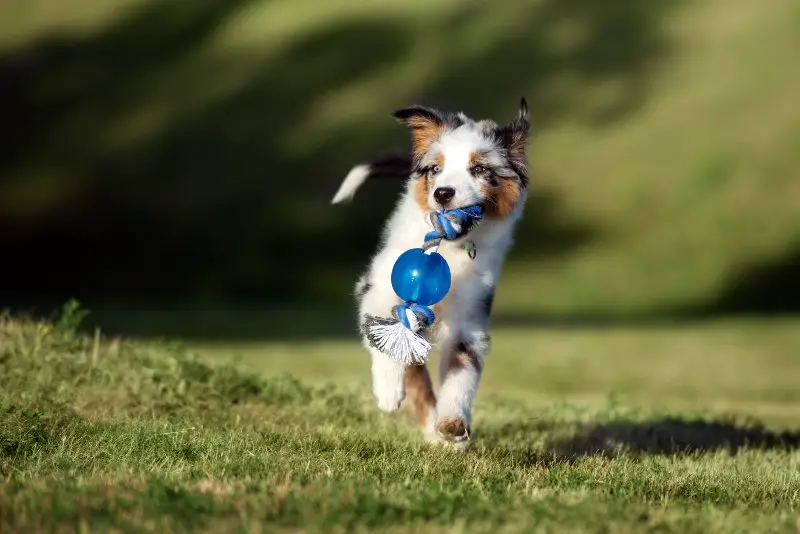
From Adobe Stock
Toy Australian Shepherds are easy to care for and don’t have any special care requirements. Basic needs include food, water, exercise, and medical checkups and vaccinations. These dogs also need love and attention from their owner.
Feeding a Toy Australian Shepherd
Feeding Frequency
Throughout all life stages, it’s important to monitor your Toy Australian Shepherd’s weight and body condition, adjusting their diet as needed. Regular check-ups with a vet can also help ensure their dietary needs are being met appropriately for their age and health status.
Puppy Stage (Up to 1 Year): Puppies have different nutritional needs compared to adult dogs. During their first year, Toy Aussie puppies require more frequent feedings of specially formulated puppy food to support their rapid growth and development. Typically, it’s recommended to feed them three to four times a day. This helps to provide a steady supply of energy and nutrients as they grow. Always ensure the food is appropriate for small breed puppies, as their smaller mouths and stomachs have specific requirements.
Adult Stage (1-7 Years): Toy Australian Shepherds usually do well with two meals a day as they transition into adulthood. This not only meets their energy needs but also helps in maintaining a healthy weight. Adult dog food should be high-quality and formulated to meet the needs of an active, small-breed dog. The portion size and caloric content should align with their activity level – more active dogs may require more calories, while less active dogs need fewer to prevent weight gain.
Senior Stage (Over 7 Years): As Toy Aussies enter their senior years, their metabolism slows down, and they may become less active. It’s often necessary to adjust their diet to prevent weight gain and support joint health. Senior-specific dog food, which is lower in calories and higher in fiber, can be beneficial. Feeding schedules may remain the same, with two meals a day, but the portion size might need to be reduced. Also, consider supplements for joint health, as advised by your vet.
Balanced Diet
First and foremost, a balanced diet is key for a Toy Australian Shepherd. These energetic dogs require the right mix of protein, fats, and carbohydrates to maintain their health and energy levels. High-quality dog food, whether commercial or home-prepared (with veterinary guidance), should meet their nutritional needs. Remember, the diet should be appropriate for their age, size, and activity level.
Portion Control
Portion control is crucial for Toy Aussies. Due to their smaller size, they can easily become overweight if overfed. I advise owners to follow feeding guidelines and adjust as necessary based on the dog’s activity level and metabolism. Regularly monitoring their weight and body condition can help prevent obesity, which is essential since excess weight can exacerbate health issues like joint problems.
Avoid Human Food
While it’s tempting to share your snacks with your furry friend, many human foods can be harmful to dogs. Foods like chocolate, grapes, and onions can be toxic to Toy Australian Shepherds. I always recommend sticking to dog-specific treats and avoiding table scraps to prevent digestive issues and potential health risks.
Fresh Water
Lastly, always ensure your Toy Aussie has access to fresh, clean water. Proper hydration is vital for their overall health, especially given their high energy levels. Regularly changing their water and keeping their bowl clean encourages them to drink enough throughout the day.
Grooming a Toy Australian Shepherd
Grooming is an opportunity to check for any skin issues or parasites, and a great way to spend quality time with your furry friend.
Regular Brushing
Grooming a Toy Australian Shepherd starts with regular brushing. Their moderately long coat needs brushing at least twice a week to prevent matting and to keep it shiny and healthy. During shedding seasons, you might need to brush them more frequently to manage the increased shedding. I use a slicker brush and an undercoat rake for the best results. This not only keeps their coat in top condition but also helps to strengthen the bond between you and your pet.
Bathing
Bathing your Toy Aussie doesn’t need to be a frequent task; every few months is usually sufficient unless they get particularly dirty. Over-bathing can strip their coat of natural oils, so it’s important to use a mild dog-specific shampoo. Post-bath, ensure they’re thoroughly dried to prevent any skin irritation, especially in colder weather.
Nail Trimming
Nail trimming is an essential aspect of grooming. Toy Australian Shepherds are active dogs, and overgrown nails can cause discomfort or lead to problems with walking. I recommend trimming their nails every month or as needed. If you can hear their nails clicking on the floor, it’s time for a trim. If you’re not comfortable doing it yourself, a professional groomer or vet can help.
Ear Care
Regular ear checks and cleaning are important to prevent infections, especially since Toy Aussies have floppy ears. I gently clean their ears using a cotton ball and a vet-approved ear cleaner. It’s important to be gentle and never insert anything deep into the ear canal.
Dental Hygiene
Lastly, don’t forget about dental hygiene. Regular teeth brushing with dog-specific toothpaste helps prevent tartar buildup.
Training and Excercise
Balancing training, exercise, mental stimulation, and socialization is essential for a Toy Australian Shepherd. This approach not only keeps them physically fit but also mentally sharp and socially adept, leading to a well-behaved and contented companion.
Training
Training a Toy Australian Shepherd can be a rewarding experience due to their intelligence and eagerness to learn. Start training early, using positive reinforcement techniques like treats and praise. I’ve found that they respond well to consistency and patience, so regular short training sessions are more effective than sporadic, long ones. Focus on basic obedience commands first, then gradually introduce more complex tasks. Their intelligence makes them great candidates for advanced training and dog sports like agility and obedience trials.
Exercise
Exercise is crucial for this energetic breed. Toy Australian Shepherds require daily physical activity to stay healthy and happy. A mix of walks, playtime, and running is ideal. They love interactive games like fetch, which also strengthen your bond. Since they’re a small breed, they can adapt to apartment living as long as their exercise needs are met. Without adequate exercise, they can become bored and develop destructive behaviors.
Mental Stimulation
Mental stimulation is as important as physical exercise for this smart breed. I like using puzzle toys and treat-dispensing games to keep their minds active. I also rotate their toys and introduce new games regularly to keep them engaged and prevent boredom. It’s fascinating to watch them solve problems and figure out games.
Socialization
Proper socialization is key to developing a well-rounded Toy Australian Shepherd. Expose them to different people, pets, and environments from a young age. This helps prevent fearfulness and aggression, ensuring they grow into confident, sociable adults. Regular visits to dog parks or doggy daycare can also help in their socialization.
Toy Australian Shepherd Price
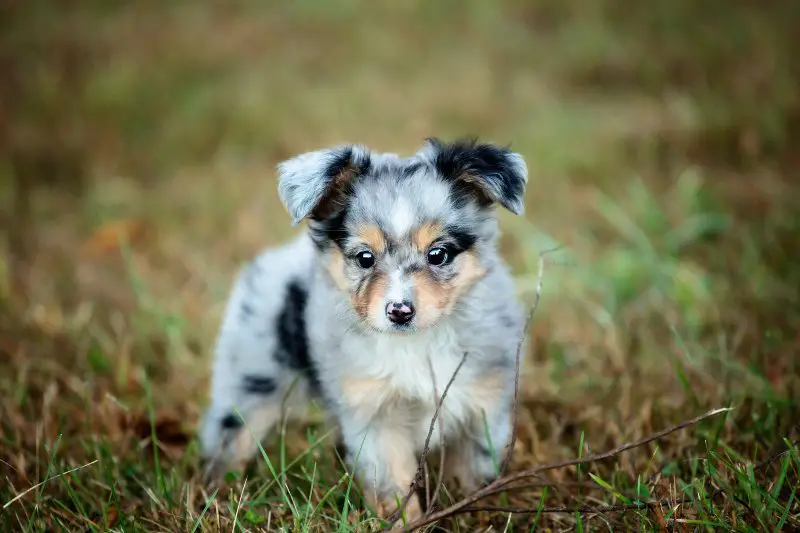
From Adobe Stock
The Toy Australian Shepherd is an expensive dog. Buying from a reputable breeder raises the price, but also ensures that you’re getting a healthy pup. I’ve learned that adopting from the local shelter is cheaper than buying from a breeder, but it comes with the risk of not knowing the dog’s lineage and possible associated health problems.
So, How Much Is a Toy Australian Shepherd?
A Toy Australian Shepherd typically costs $1,800 to $2,500, depending on the breeder. Commercial breeders that mass-produce these dogs will be cheaper than smaller, more exclusive breeders that limit the number of litters from each set of parents.
Merle-coated toy Aussies are more popular than single-colored specimens and come with a higher price tag. A pedigreed and registered toy Aussie puppy costs more than an adult dog whose lineage may be uncertain. Buying from a breeder is more expensive than adopting from a shelter.
Is a Toy Australian Shepherd Right for You?
The Toy Australian Shepherd is a great dog that makes an ideal house pet. However, because of certain characteristics, I find that this dog may not be suitable for some people or certain lifestyles.
Toy Australian Shepherds Are Suitable for:
The Toy Australian Shepherd is suitable for families with children because this breed is a sociable and very friendly dog. These dogs bond closely with their owners and enjoy human interaction, so they’ll benefit from the attention that children can give them.
Toy Aussies make good apartment dogs because they are so small, but these dogs are extremely active and need a lot of exercise. This breed is a good dog for an active owner who enjoys long walks or jogging around the neighborhood at least twice a day.
Toy Australian Shepherds Are NOT Suitable for:
Toy Australian Shepherds aren’t suitable for owners who don’t have time or energy to devote to their dog.
Further, because this breed is prone to separation anxiety when left alone for long periods, a Toy Aussie needs a lot of attention and stimulation to prevent boredom. Toy Aussies are active little dogs that aren’t suitable for owners who are unable to walk their dogs regularly.
FAQs on Toy Australian Shepherds
How much does it cost to own a Toy Australian Shepherd?
Owning a toy Aussie costs around $1,500 per year for food, toys, grooming, and medical expenses. In the first year expect to pay an extra $200–$300 for initial expenses. Vet bills may increase as the dog ages.
What is the lifespan of a Toy Australian Shepherd?
Toy Australian shepherds typically have a 12 to 15-year lifespan. Certain medical conditions may shorten the average lifespan, while good care can lead to a longer life.
Are Toy Australian Shepherds good with children?
Toy Australian Shepherds can be fantastic with children, especially if they’re socialized from a young age. Their playful and affectionate nature makes them great companions for kids. However, due to their herding instincts, it’s important to supervise interactions with very young children. Toy Aussies might gently herd them, as they would with sheep. Teaching both the dog and the children how to interact safely and respectfully ensures a harmonious relationship.
Do Toy Australian Shepherds need a lot of exercise?
Yes, Toy Australian Shepherds are energetic and require regular exercise to stay healthy and happy. They thrive on activities like walking, playing fetch, and participating in dog sports. Daily exercise, both physical and mental, is essential for this breed. Without it, they may become bored and exhibit destructive behaviors. Exercise also helps maintain their weight and supports overall health.
Can Toy Australian Shepherds live in apartments?
Toy Australian Shepherds can adapt to apartment living if their exercise and mental stimulation needs are met. Despite their smaller size, they are active dogs and need daily physical activity. It’s important to have a routine that includes walks, playtime, and other forms of exercise. Additionally, providing mental stimulation through training and puzzle toys can help keep them content in a smaller space.
How easy is it to train a Toy Australian Shepherd?
Toy Australian Shepherds are known for their intelligence and trainability. They are eager to please and learn quickly, making training a relatively easy process. Positive reinforcement techniques work best with this breed. Consistent, short training sessions, combined with patience and rewards, yield the best results. Early socialization and obedience training are recommended to bring out the best in these dogs.
Toy Aussies Will Amaze You
The Toy Aussie, with its intelligence and boundless energy, is a testament to the saying ‘good things come in small packages.’ They make friends wherever they go, and their affectionate nature makes them an excellent family dog. Training them is easy, thanks to their intelligence and eagerness to please. But it’s not all about physical energy; they need mental challenges too, so puzzle toys and training games are a must.
When it comes to their care, a balanced diet and regular exercise are non-negotiable. Grooming, though not overly demanding, is essential for their well-being. With the right care, training, and a whole lot of love, they make life richer and fuller.

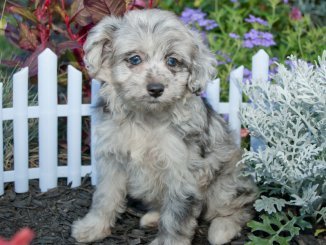
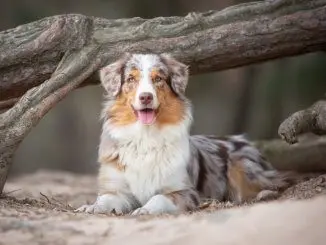

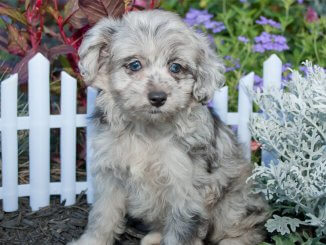
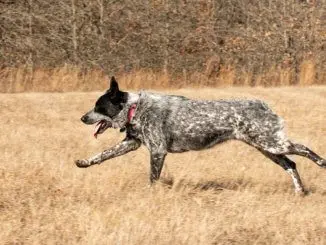
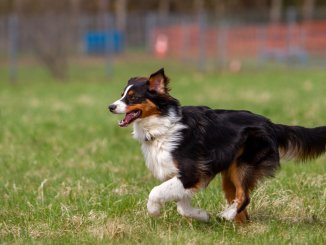
My Toy Aussie is already 15 1/2 years old. I think she’ll last 1 or more year. She’s the best I ever have in my life.